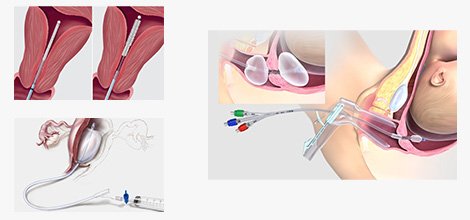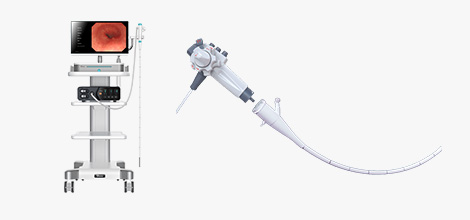產(chǎn)品分類
吻縫合器系列
能量外科系列
婦產(chǎn)科系列

婦產(chǎn)科系列
內(nèi)窺鏡系列

內(nèi)窺鏡系列
麻醉導(dǎo)管系列
麻醉導(dǎo)管系列
康復(fù)理療系列


Upper and lower limb exercise rehabilitation training system
1. Product principle
The upper and lower limb exercise rehabilitation system drives the patient or the patient to actively train the motor to make the limb end move in a circular motion along a fixed axis, so as to improve the entire limb of the upper limb and/or lower limb (including shoulder, elbow, wrist, finger, hip, knee, ankle joints). and related muscle groups) for comprehensive exercise training. It can improve the patient's joint mobility, enhance muscle strength, muscle endurance, exercise cardiopulmonary function, and improve the coordination of limbs
2. Scope of application
Rehabilitation training for patients with joint dysfunction
3. Features and advantages
1). Electronic information storage, with large-capacity storage space
2). A variety of training modes to achieve full coverage of the rehabilitation cycle:
Passive mode: maintains the range of motion of the joints, suitable for flaccid patients with muscle strength 0-1.
Power-assist mode: exert the patient's subjective initiative and residual function, improve muscle strength, suitable for patients with muscle strength level 1-2
Active mode: resistance muscle strength training, improve muscle strength, enhance cardiopulmonary function; suitable for cardiopulmonary rehabilitation and patients with muscle strength level 3-4
Isokinetic mode: The size of the resistance increases with the increase of muscle strength, so as to control the speed of training; it is suitable for patients with muscle strength of 4-5 grades, which is not easy to cause muscle strain and has stronger joint stability.
*Active mode and passive mode can be automatically switched according to the functional status of the patient
3). Rich game content:
Provide 6 situational interactive training games, and give patients more attention to listening and feedback experience while performing exercise therapy.
4). Statistical analysis of data, quantitative training effect:
Record and generate each training data of patients, and compare and analyze multiple training data to provide guidance for subsequent training program adjustment, treatment cost accounting, and training efficacy judgment.
5). Collaborative training to achieve real-time linkage of upper and lower limbs (only AP001/AP002)
The upper and lower limbs are trained at the same time, suitable for hemiplegia or paraplegia patients with different degrees of damage to the limbs, reducing the training time and improving the coordination of the limbs
4.Carry the management platform for unified management
1). Intelligent self-service machine
The patient's training plan, training schedule and training times can be preset on the management platform. The patient scans his face on any training device, and the device automatically reads and executes the patient's training plan, reducing repeated settings each time the machine is on. The tedious operation of setting parameters
2). Face collection and recognition system
Using face recognition to enable training equipment and training programs can strictly control the users of the equipment to prevent damage and medical risks caused by random use of the equipment.
3). Customized personalized training program
Diversified and step-by-step training can be achieved through the combination of various modes, difficulties, and games.
4). Support multi-person interactive training
Provides 2 interactive game scenarios, which can interact with 6 people or less at the same time, form a real-time confrontation mode, guide users to integrate into the social interaction scenario, and improve the fun and enthusiasm of training.
5). Device management
It can manage multiple devices in a unified way, and supports the functions of adding, deleting, and statistics of device operation data (including running time, running status, running trend, and patient category).
5. Structural details display
Seated upper and lower body:
1). The touch operation of the tablet computer of ≥10 inches is convenient for patients with weak muscles.
2). With hand fixing straps, fix the upper limbs on the paralyzed side.
3). It has a wheelchair fixing device to avoid the patient's force causing the wheelchair to retreat.
Bedside lower extremities:
1). The touch operation of the tablet computer of ≥10 inches is convenient for patients with weak muscles.
2). The ground is fixed and supported, which is more stable, and can be used in wards and rehabilitation halls.
3). Electric lift up and down, easy and labor-saving.
4). Hand-cranked front and rear telescopic arms, suitable for patients with different leg lengths.
5. Bedside foot straps to meet the needs of patients of different sizes.
6. Product model and appearance diagram
